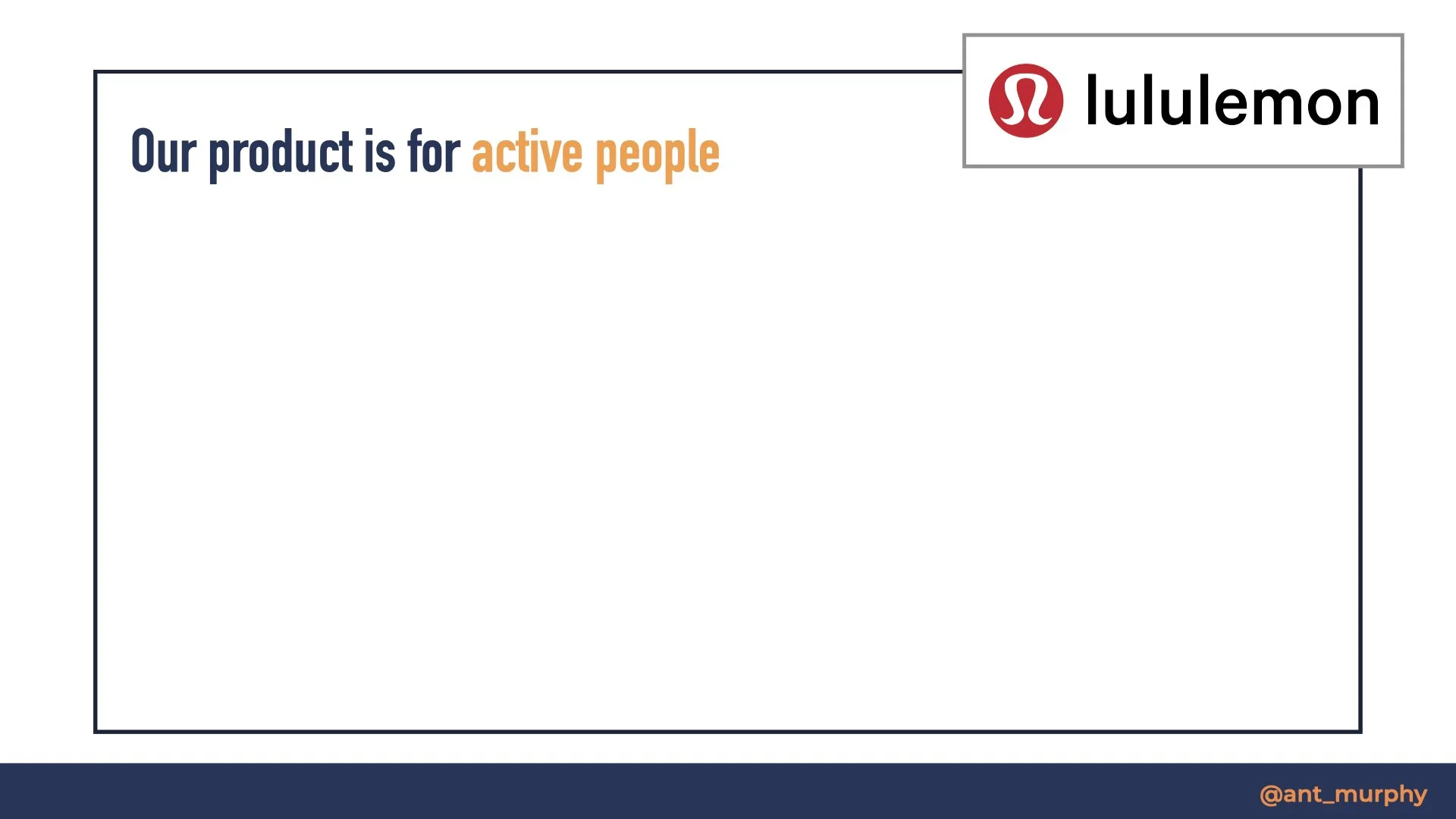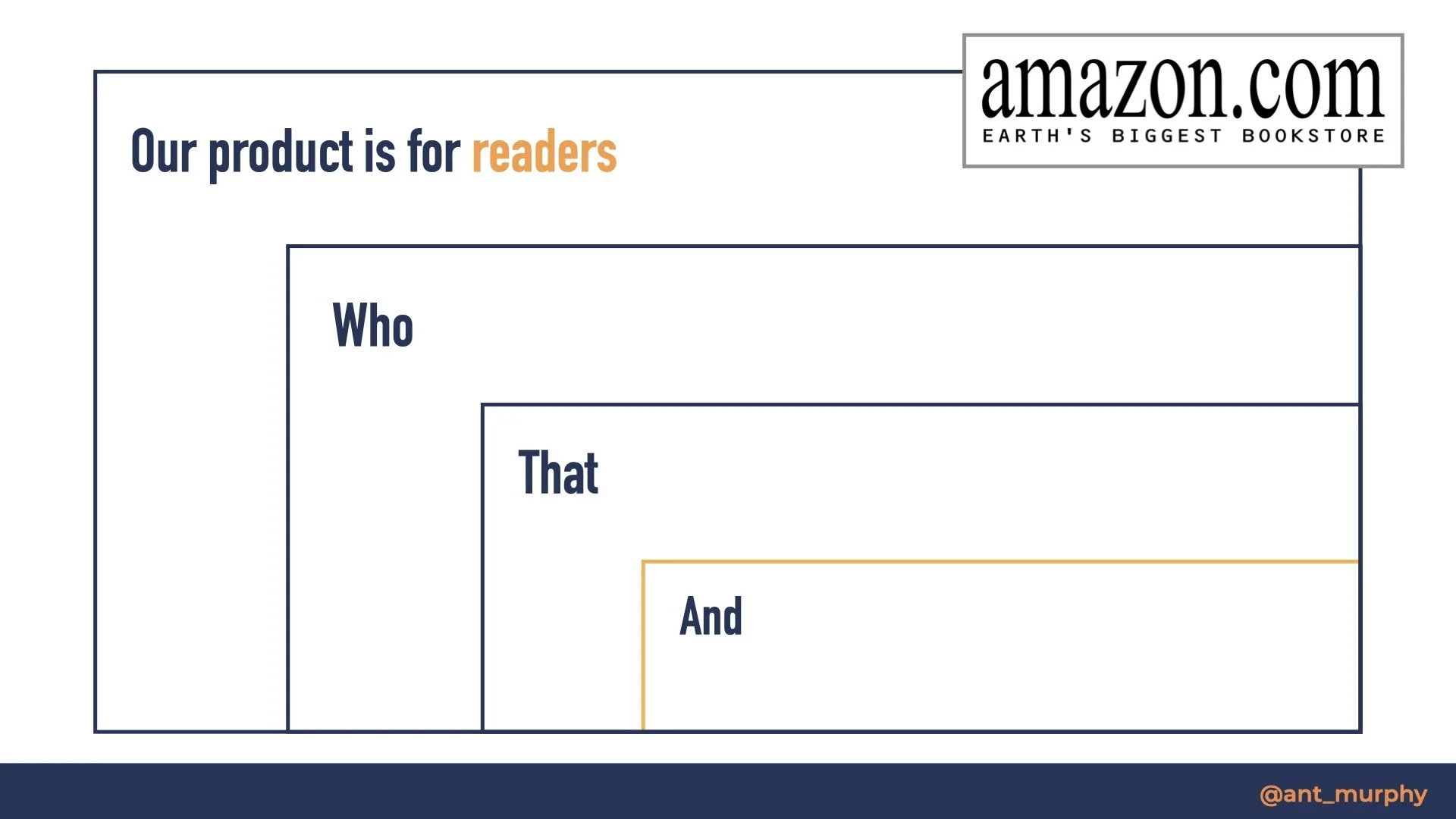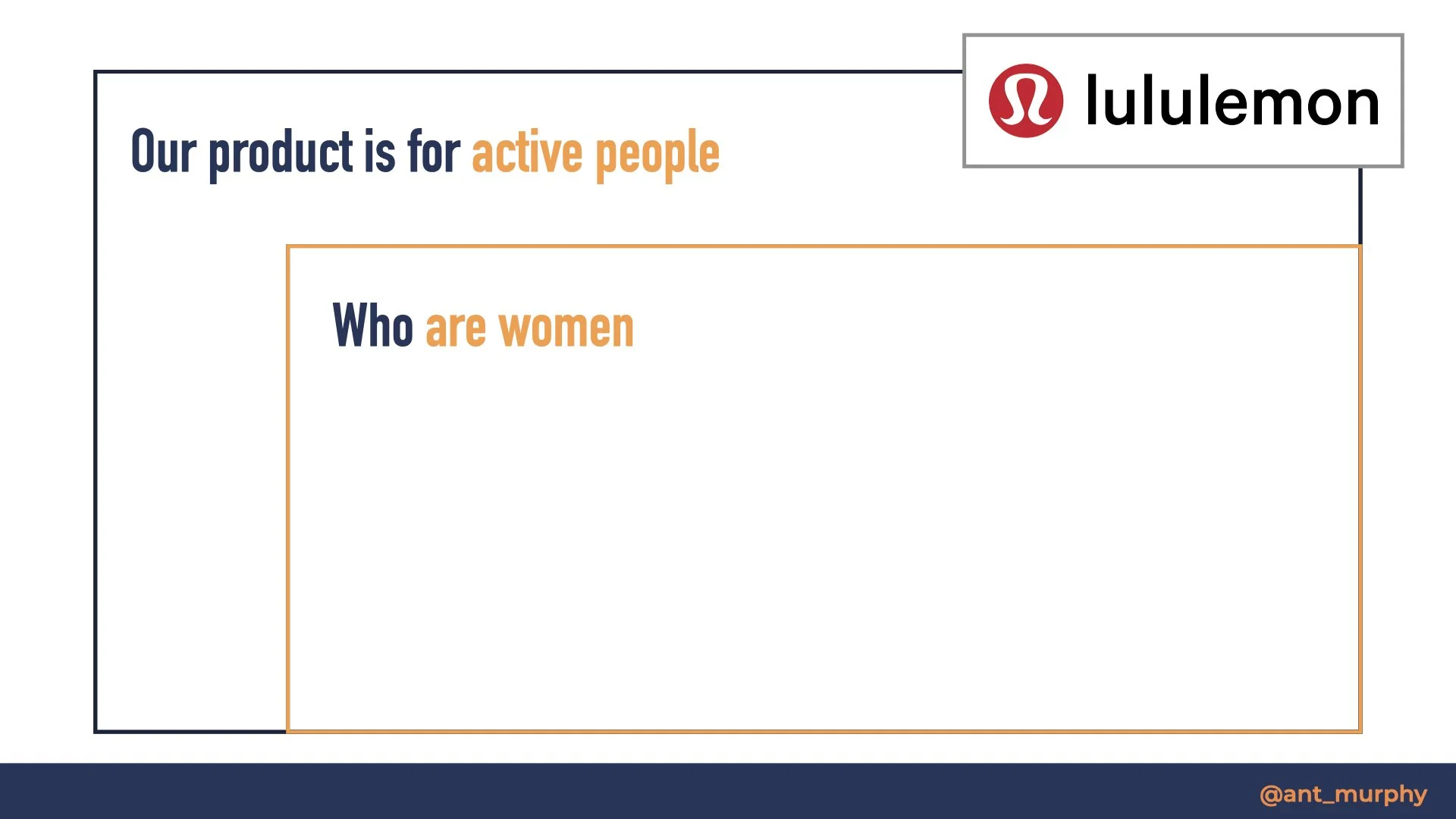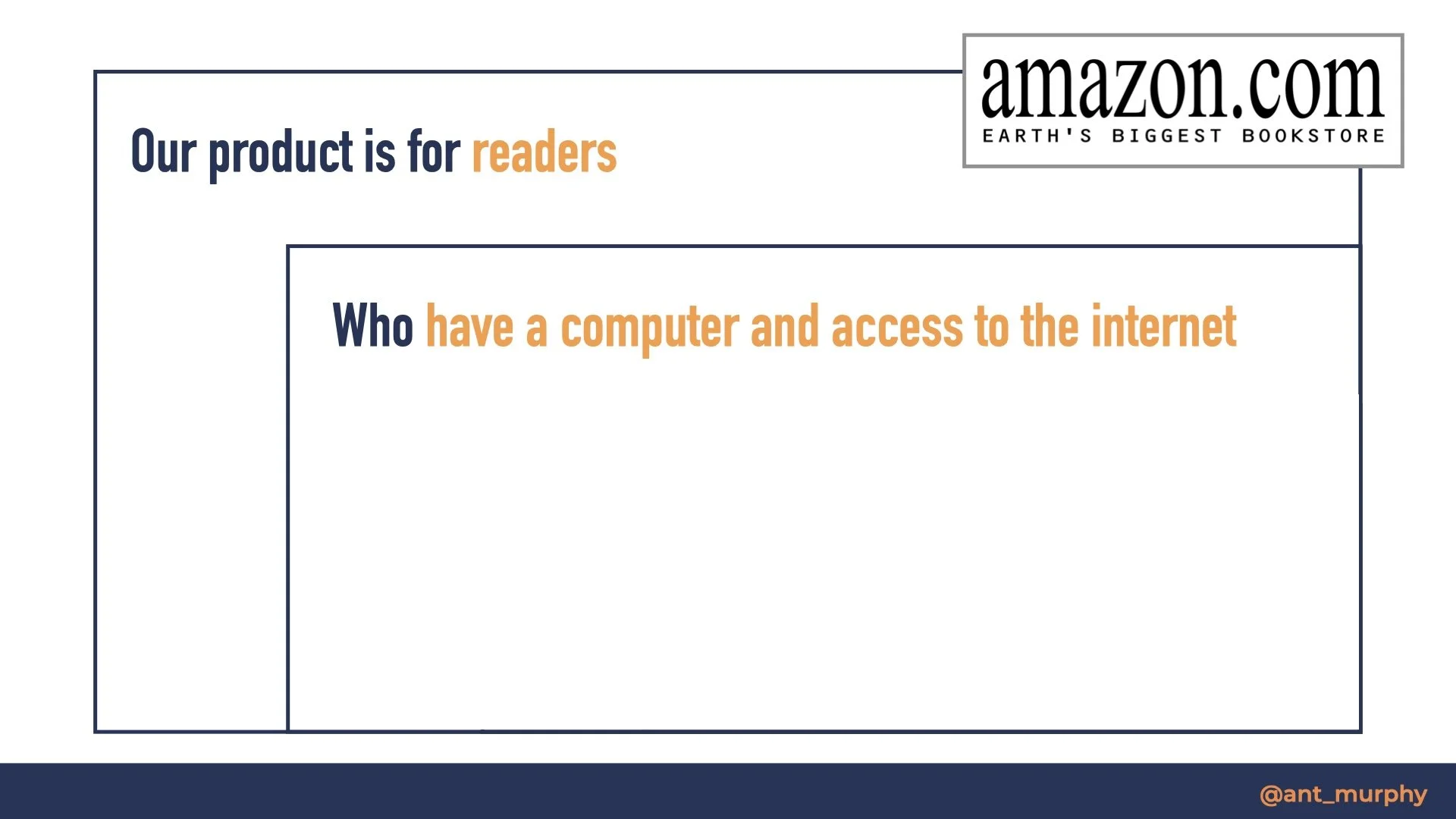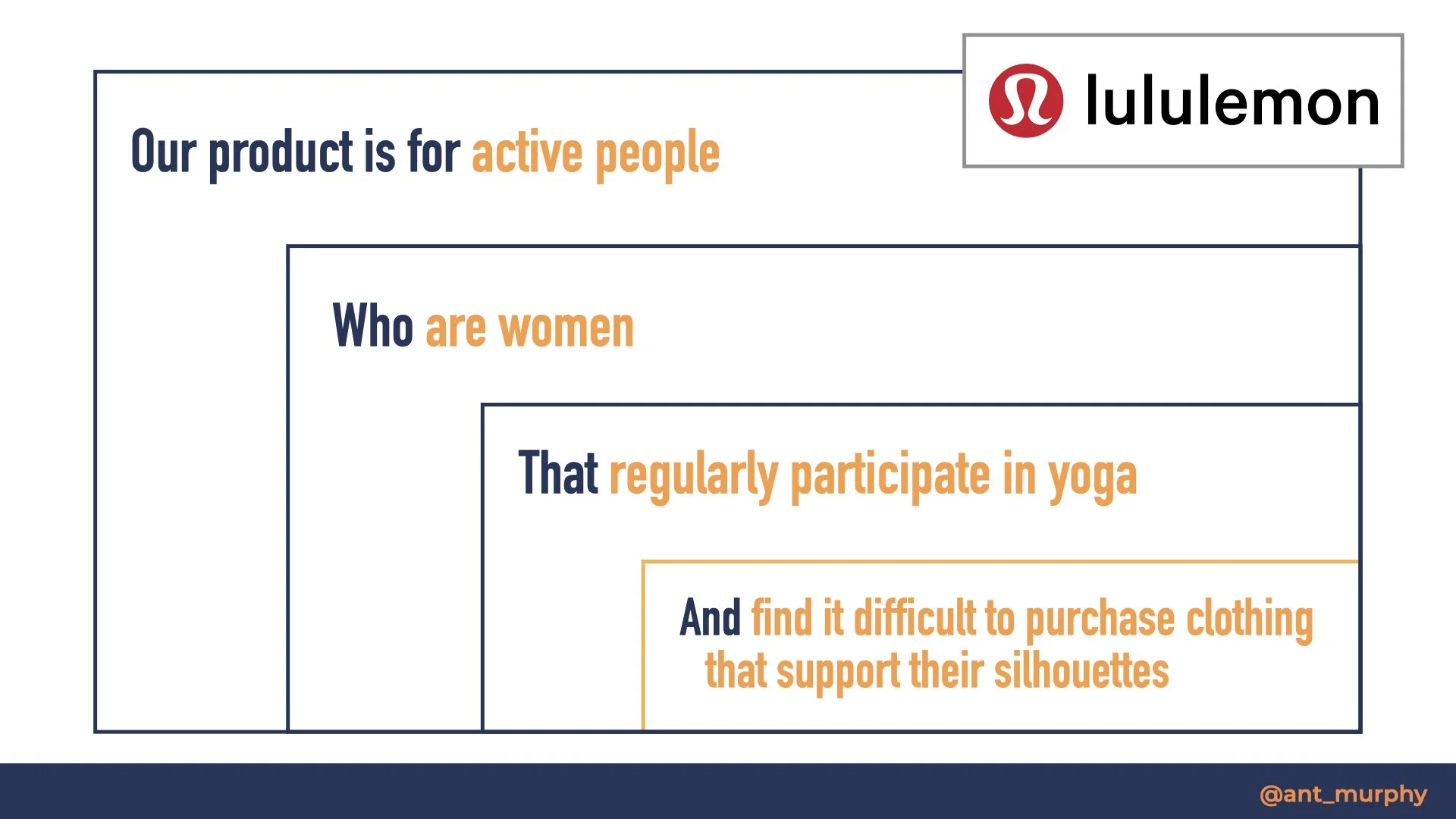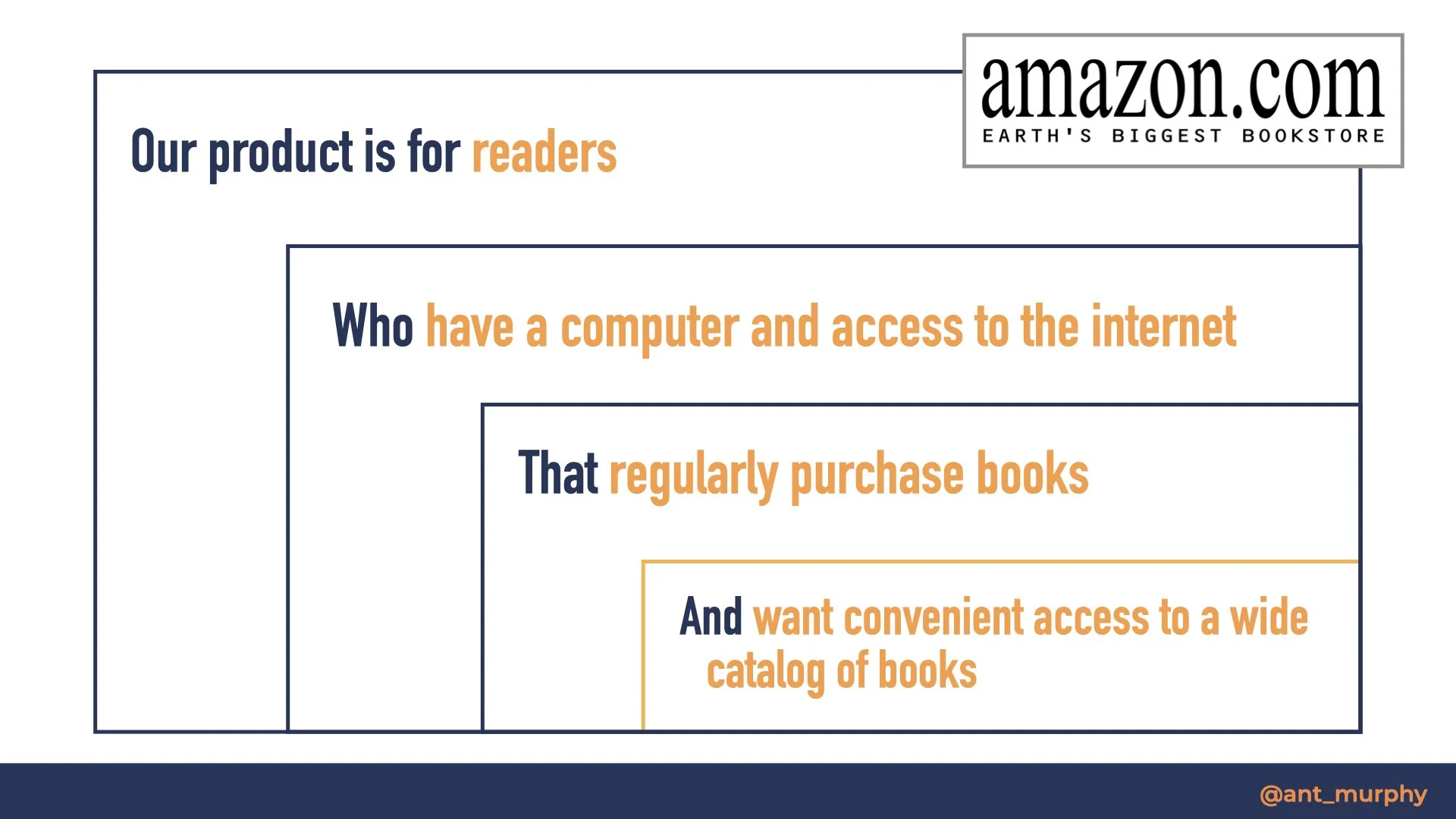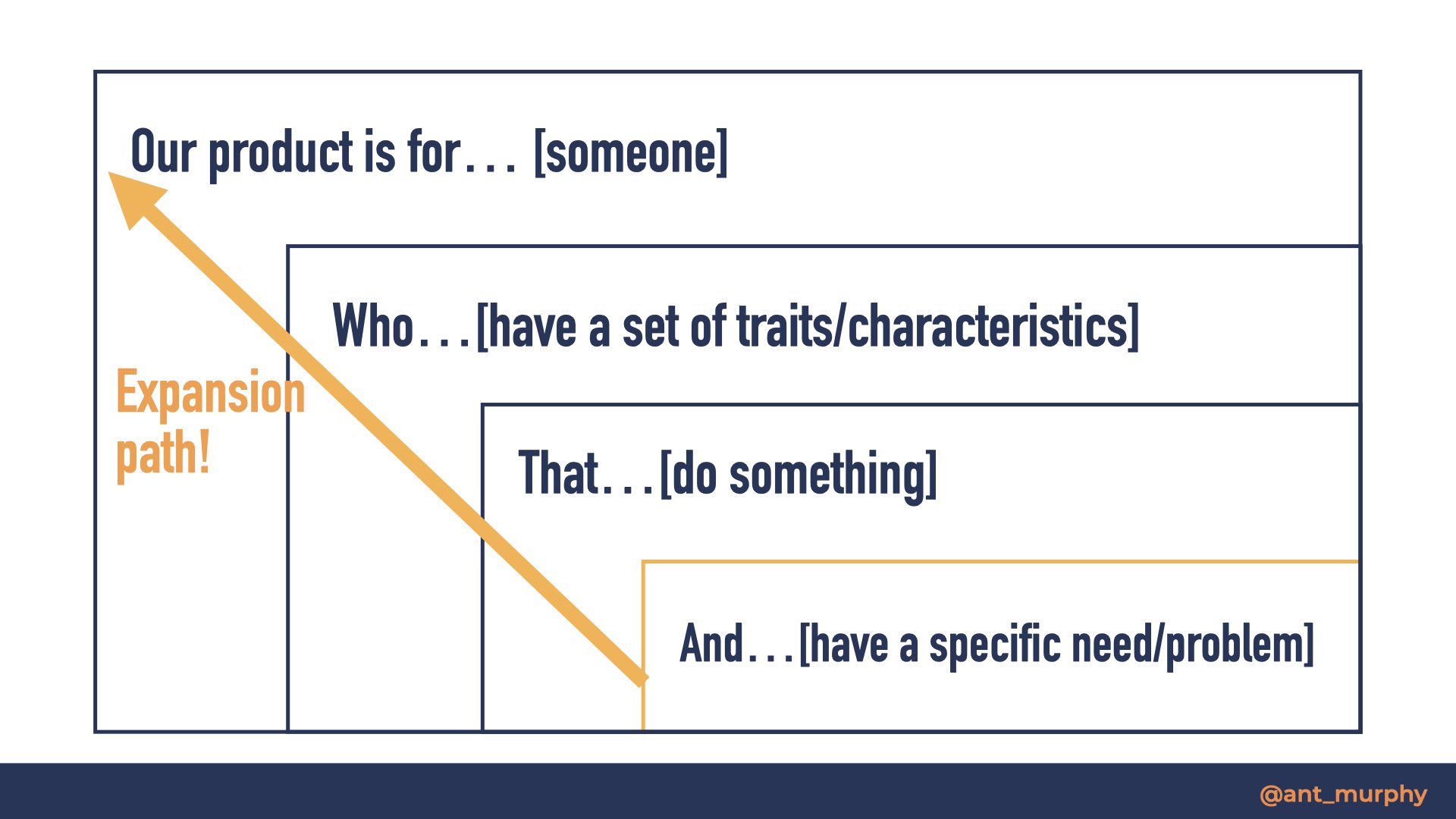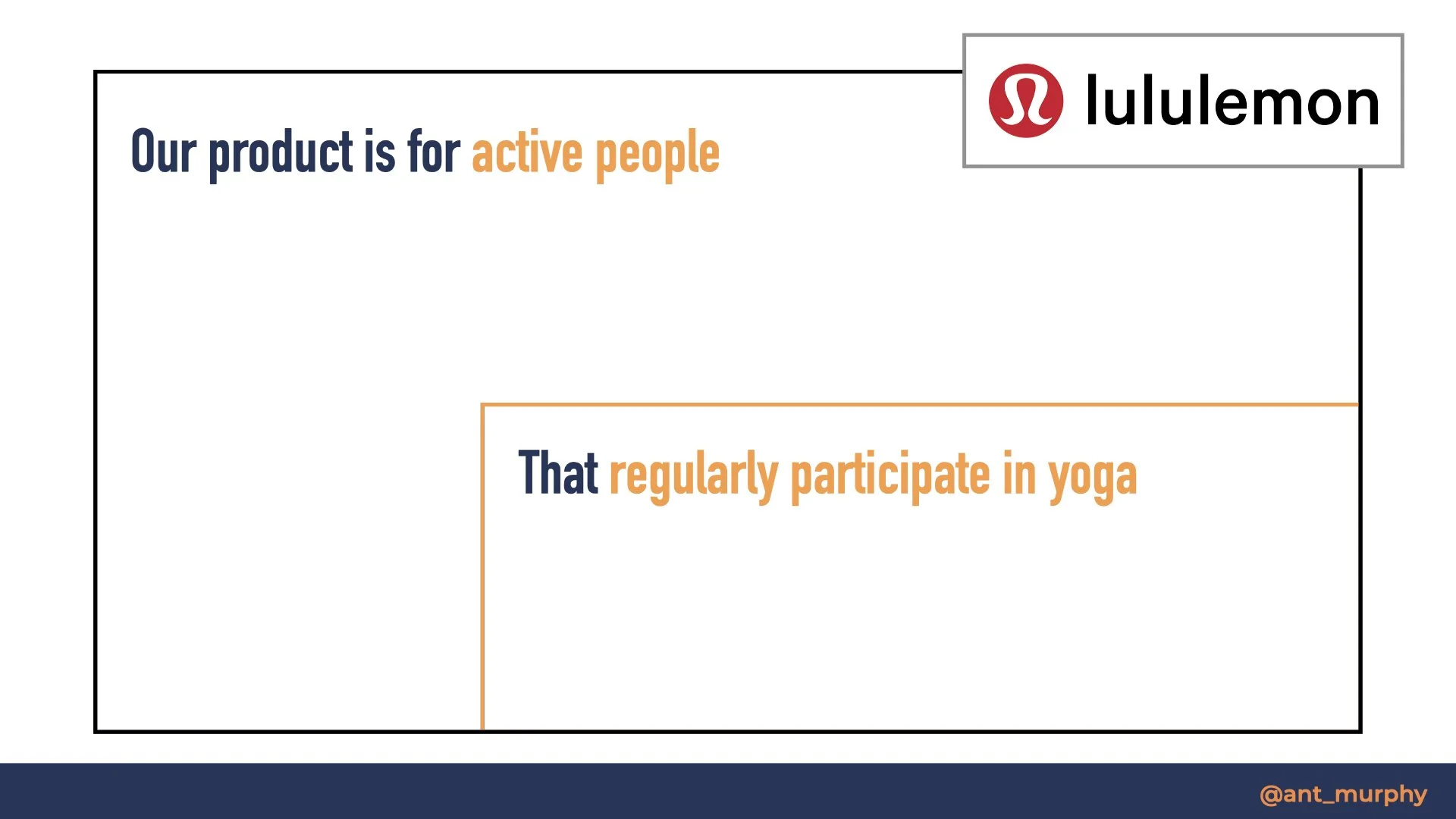‘Niching’ Down
“No niche is too small if it’s yours” - Seth Godin
We’ve all heard the saying, “if you try to please everyone, you please no one.” This is especially true for startups and new products.
Focus and being able to find a niche can be a huge unlock for products.
Square started as a POS (Point of Sale) device, Lululemon started as yoga clothing for women, and Amazon started as an online book store.
Each of these companies are now valued in the billions (trillions in Amazon’s case), which goes to show that we should never be too afraid to ‘niche down’.
In fact, I’d argue that it’s a common pattern of success for early-stage companies and products.
Focus is a high-leverage skill. Being able to focus your limited time, resources, and people can often be the thing that makes or breaks a company.
I had an example of this a couple of years back when I did some work with the ABC here in Australia whilst I was at ustwo - ABC as in Australia Broadcasting Corporation, not the American Broadcasting Company, just to be precise!)
We were brought in to help them with a Product-led transformation, and naturally, that meant starting with a review of their product portfolio.
To cut a long story short, as part of that review, we looked at their “flagship app” which few could really describe what its purpose was…apart from rattling off a long list of features and things that it could do.
In essence, their flagship app was trying to be everything for everyone. No kidding! It was an app that you could use to read the news, listen to the radio, and even set an alarm clock where you could “wake up with the ABC” - yes, you read that right!
Credit: ABC - Screenshot of the old ‘Wake up with the ABC’ featureSidebar: While I can see the appeal of the notion of flagship-or-super apps, I remain skeptical. Yes, you can point to WeChat and AliPay, but every super app example more-or-less seems to be contained to Asia - or more specifically, China - which, by the way, is a very unique context and part of the world.
For the rest of us, however, I’m yet to see such super-apps work out. Instead, the pattern I observe is that the more focused products perform best - think Instagram; do you believe that it would have been (and continue to be) as successful as it is today if Facebook merged all that functionality into the main app and tried to be a form of ‘super-app"‘? I don’t think so.
With the ABC, their app was trying to be everything, and as the saying goes, it was not satisfying anyone.
The challenge became, what do we do with this app? We can agree that there is a space for a mobile app for the ABC - perhaps more than one - but what would its main purpose be?
To cut another long story short, we did what all great product people do, and we did the research. We spoke with users, with non-users, and looked at usage data (no, the alarm clock was not a heavily used feature - go figure!).
What we discovered were a few things:
ABC’s product portfolio largely delivers the company’s media content through 3 key mediums (content you read, watch, and listen to)
Current users of the app used it to read the news (and not much else) - some even referring to the Flagship app as the “news app.”
What they really had was a news app that was trying to masquerade as half a dozen other things.
Over the next 12 months, some brilliant people and I helped pivot the app to be news-centric. Even rebranding it to be clearly the “ABC News App”.
The ABC News App today (2023)This resulted in not only a far better experience but also increased adoption by 6% that year (of memory) and engagement.
Much like Instagram, which does one thing really well, that’s what we had managed to unravel.
Rather than a ‘Flagship app’, what they really needed was a News app. This turned out to be a particularly good strategic move two years later when the COVID-19 outbreak happened, and people were tuning into the ABC News app in record numbers to stay up to date with the ever-changing situation.
But the moral of this story is that being focused and clear on what your product is and for who - and also what it’s NOT and who it’s NOT for (arguably more important) - can be a superpower. It can make or break a product.
“Stop managing you time, start managing your focus” - Robin S. Sharma
Finding your ‘Niche’
More recently, I’ve found myself doing more work with early-stage founders, and defining your niche has been a common topic.
As a result, I’ve developed this template that to help founders and product managers define their niche for early-stage products.
Niche Canvas. Download the canvas here.This has gone through (and will continue to go through) several iterations, but the notion is to start by thinking about your broad industry/market and then break it down.
You could think of it as a tool to help facilitate market segmentation - which really is all ‘niching down’ is (segmenting a market down to a niche)
How it works:
The first and largest box should represent the top-level customer - who is your product for?
For example, Lululemon sells activewear and is focused on active people.
Lululemon Example: First layer is the broad customer you are targeting. Think of it as the Industry or Market you're operating in. It’s important to note that what you put here doesn’t need to define your target customer forever.
For example, when Amazon first launched, it was a bookstore and therefore focused on people who read. However, as we know, over the years, they’ve expanded well beyond that.
Amazon example: When Amazon first launched it was a bookstore and therefore targeting people who read.The next layer is now defining the specific traits and/or characteristics shared by those within your target customer segment that make them the ideal target customer.
For example, when Lululemon started out, it was specifically focused on Women’s wear (Yoga clothes for women, to be precise - we’ll get to that in a second).
For Amazon, it was readers who had access to a computer and the internet - as it was an online bookstore as opposed to a physical one.
Lastly, we have the behaviors that our target customers with the following traits will typically do and what needs or challenges they face as a result of those behaviors.
Again, in Amazon’s case, it was readers with internet access who regularly purchased books and either found it difficult to find the books they would like to read or simply would like access to a wider catalog than what the primary alternatives were offering.
Lululemon, as mentioned before, was focused not just on active women’s wear but on yoga clothes specifically.
These two final boxes represent the niche that we are seeking to target.
You may find yourself going back and forth between 2 or more different niches in those final boxes, and that’s fine. The canvas is designed to help facilitate your thinking, help codify, and easily explain your niche in a clear way. It won’t however give you all the answers - the thinking is still left up to you!
Expansion Path
One of the reasons why this canvas is drawn as boxes sitting within one another is because each box represents a broader (or narrower) slice of your market.
For example, Lululemon creating Yoga clothes for women is a much smaller market than, say, activewear in general (across all sports and genders).
Now, this niche canvas can also be a powerful tool to help you define and think about your expansion path. One day, you’re going to reach a market cap in your chosen niche, and more than likely, you’re going to want to expand.
The ‘Niche Canvas’ is also a powerful tool for thinking about your expansion path as a business and product.To continue with the Lululemon example:
they started with women's yoga clothes,
they then expanded to yoga clothes for men and women,
and then into fitness clothes in general,
more recently, they’ve begun to branch into spaces like footwear, gym accessories, and everyday clothing.
Expanding into yoga apparel and equipment was a logical first expansion step for Lululemon...But yoga is ultimately a smaller industry than activewear and fitness equipment - even if it was only for women.Now, this is an important concept to consider when defining your niche. Some niches can be too ‘niche’ and you can become trapped without a logical space to expand into.
For some, that might be completely ok. They might be fine with not expanding and happy to service their niche indefinitely. However, for most businesses, we like to expand - it’s great both from a revenue perspective and also to de-risk as we diversify our revenue lines and continue to innovate.
So whilst ‘niching down’ is a powerful tool and absolutely where most businesses and products should start, we must be mindful when defining our niche that we have a way forward, that there is a path to expansion, and that we haven’t backed ourselves down a dead-end street so to speak.
Final Words
The niche canvas was something I developed and honed over the years working with early-stage founders and 0-1 product managers. It’s proven to be a valuable exercise that you can do both individually and collaboratively (it makes for a good team workshop).
I really like it for a few reasons:
It works well to facilitate your thinking around customer segmentation and honing in on that niche
Second, I (and others I’ve coached) find the format to be great for articulating and communicating your niche/target market segment
Finally, I particularly love using it as a tool to facilitate thinking around expansion.
Now, don’t get too caught up with the expansion part early on - you can’t expand a product that you don’t have - so defining your niche and getting product-market fit is #1 priority. But once you do have that or when you’re looking ahead strategically, it’s a great tool to help facilitate your thinking here.
Finally, don’t feel as though you need to follow the canvas strictly. Feel free to go off script a little bit if the order of each box doesn’t suit your product perfectly (that’s okay). Again, this canvas was developed to help facilitate thinking and codify your niche in a short and succinct way.
I hope you find this to be a valuable tool to add to your toolkit. I’d love to hear stories about how you’ve put this into practice and how it’s helped you define and grow your product or business - so please do feel free to reach out any time or post about it on socials and tag me 😊
Need help with scaling your product or business? I can help in 4 ways::
Level up your craft with self-paced deep dive courses, FREE events and videos on YouTube, templates, and guides on Product Pathways.
1:1 Coaching/Mentoring: I help product people and founders overcome challenges through 1-hour virtual sessions.
Consulting and Advisory: I help companies drive better results by building effective product practices.
Private Workshops and Training: I run practical workshops and training courses for product teams globally. Get in touch to talk about your unique training needs.



